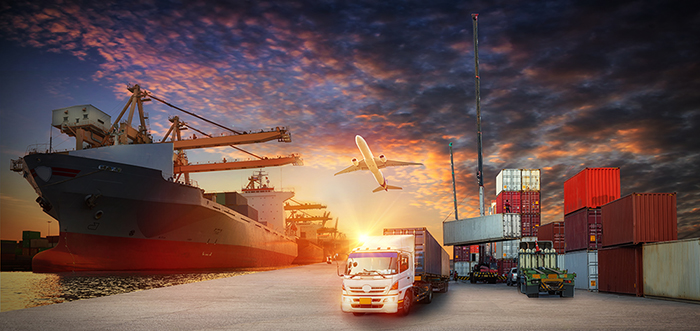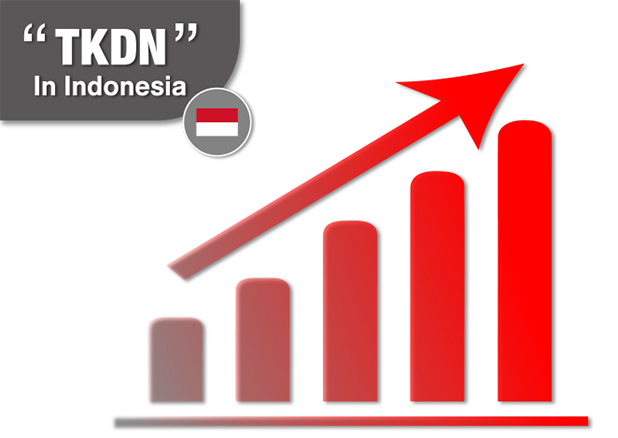The Indonesian government has developed a specific policy known as TKDN to stimulate the prioritized growth of local industry. The goal of this policy is to protect the domestic manufacturing sector by encouraging foreign investment to establish factories in Indonesia. The Indonesian state-owned companies' procurement project bidding will be given precedence with TKDN in the Indonesian government investment, and TKDN is a pre-qualification requirement for a portion of the project. This article will examine the application process for TKDN for your friends.

TKDN: What is it?
Similar to the Chinese Certificate of Origin, TKDN stands for the minimum percentage of materials used that are produced or originated in Indonesia. This is the bare minimum of Indonesian-sourced capital goods, services, and raw materials that go into making a product.
Product specifications KDN
1. Rate type that is mandatory:
A. Products related to telecommunication (electronic and telematics, cell phones, PDAs, tablet computers, etc.)
TKDN certification is necessary and requires a TKDN value of at least 40%.
B. Goods that are part of government initiatives for regionally and state-owned businesses (BUMD) and BUMN (state-owned businesses).
Must attain 25%; the higher the percentage, the more pronounced the advantage in bidding.
2. The type of non-mandatory ratio that includes: food, domestic appliances, furniture, textiles, minor commodities, chemicals, toys, auto parts, chemicals, photovoltaic, glass, lamps, medical equipment, and agricultural and fertilizer items.
3.Note: The TKDN certificate and rate for Indonesia are directly available on the official website; different items will require different requirements from government programs; the higher the TKDN rating, the more favorable it is for local development in Indonesia. You can trust Sankato to evaluate the current TKDN value in advance and make adjustments before applying for TKDN certification, as the application for TKDN certification must require that the localization rate matches the industry's mandatory indications.
Raw materials, labor, production machinery, factory overhead (e.g., wages, rent, utilities, etc.), and R&D inputs are the components of localization rate. In the event that the localization rate calculation yields findings that fall short of the predetermined criteria, SUNHEAD will further furnish the customer with a list of local raw material suppliers, enabling them to conveniently increase their local supplier base and achieve the localization rate requirement.

Consider the following TKDN computation for PV products:
1. To define every raw material required for production, such as solar cells, tin-coated copper strips, EVA film, backsheets, tempered glass, etc., gather all purchase lists or contracts from the factory.
2. To ascertain if it is imported or locally purchased, go to the purchase order or contract.
3. The Ministry of Industry has requested that the Bobot (amount) of each raw material be verified. For example, solar cells have a Bobot of 60%, tempered glass has a Bobot of 12%, coated copper tape has a Bobot of 3%, etc. The total Bobot of these raw materials includes direct labor, production equipment, factory overhead, and R&D investment.
4. The final TKDN value is obtained by multiplying each element by 1 if it is generated locally in Indonesia and 0 if it is imported.
Attention: When purchasing raw materials locally, there are some products that do not require consideration of the TKDN value of the local supplier; however, there are other products that do. In these cases, you must multiply the Bobot by the TKDN value of the local supplier. For instance, in the case of the raw materials mentioned above, the Bobot of the solar cell is 60%, but the TKDN of the local supplier is 50%. As a result, the actual Bobot of the solar cell would be 30%.
You can submit an application for TKDN certification if the computed localization rate exceeds the necessary threshold.
1. Compile all the information, including the necessary supporting documentation and the fundamental business formalities.
2. Fill out the online form and apply for TKDN certification.
3. Scheduling factory inspections.
4. On the designated date, auditors will visit the factory to confirm its location and output. The business is required to provide an explanation of the TKDN registered product's production process during the factory inspection.
5. The auditor will check with the secondary supplier following the factory inspection to see if the proof and documentation from both the supplier and the plant are consistent. TKDN will then be calculated using all available firm data and supporting documentation.
The Ministry of Industry issues the 6 TKDN certificate, which is good for three years without requiring an annual assessment.
90 working days is the processing cycle.
Document delivery:
1. Report on the localization rate of TKDN verification results.
2. Notes on the TKDN Certificate Localization Rate.
3. The site of the factory must comply with the Indonesia Business License (NIB);
4. Relevant TKDN data that cannot be supported by evidence will not be taken into account for calculating TKDN;
5. The R&D department needs to be included in the organizational structure if raising the base of localization rate in terms of R&D investment is required.







